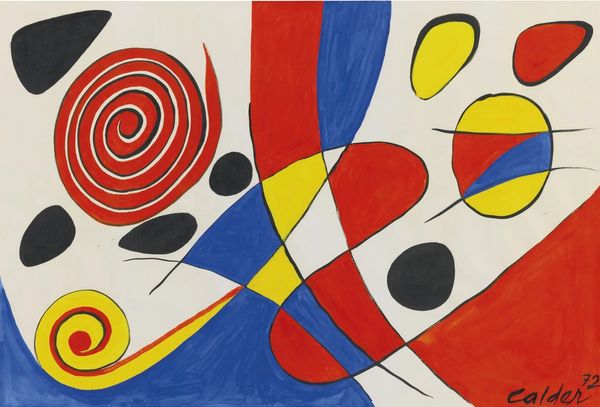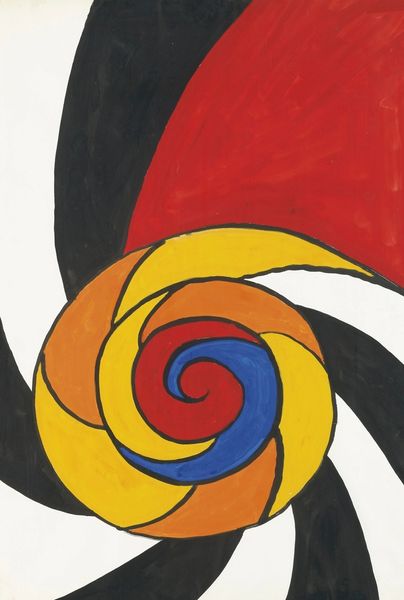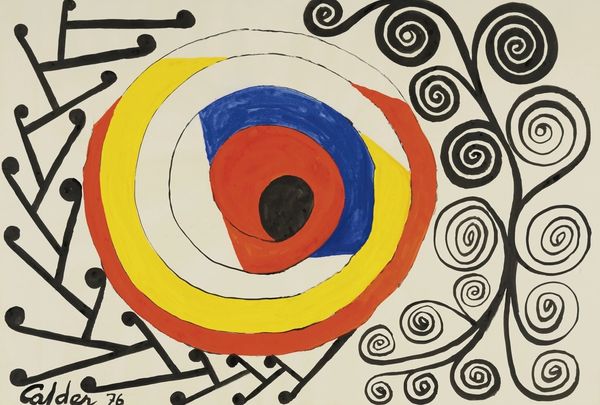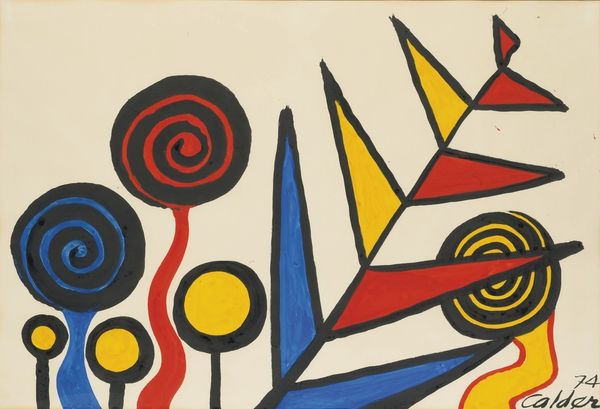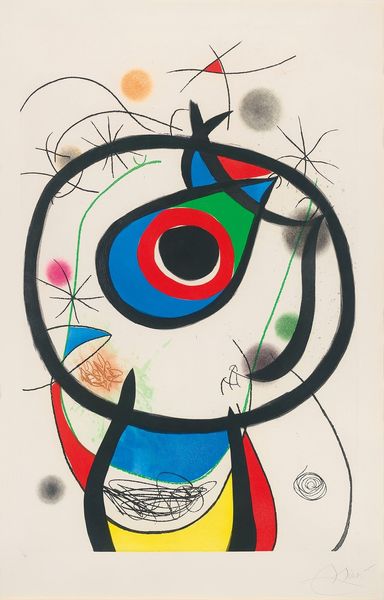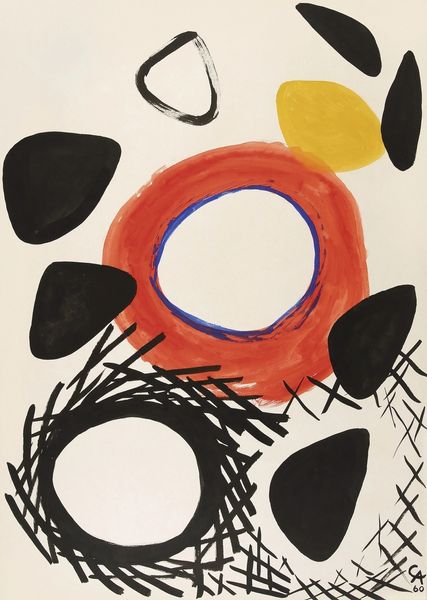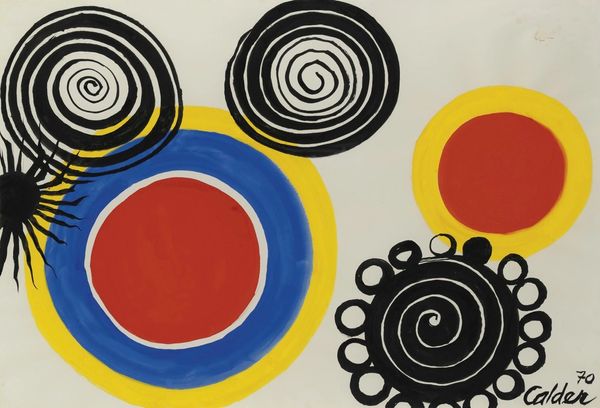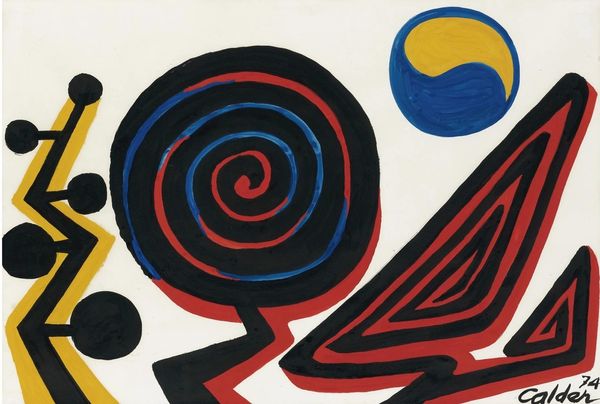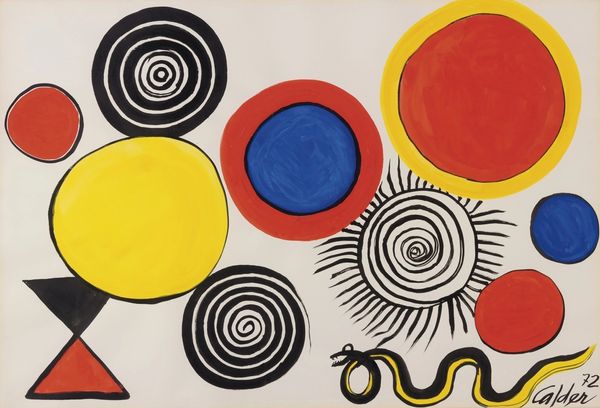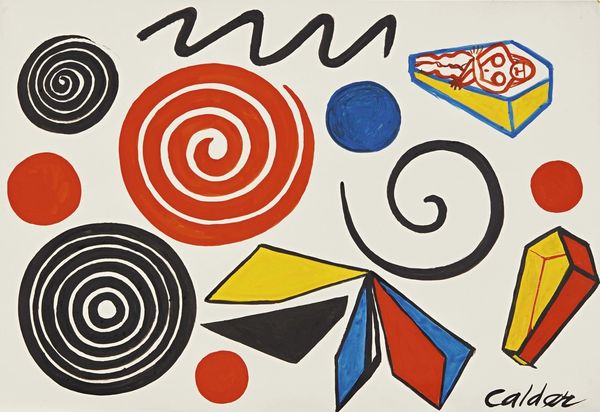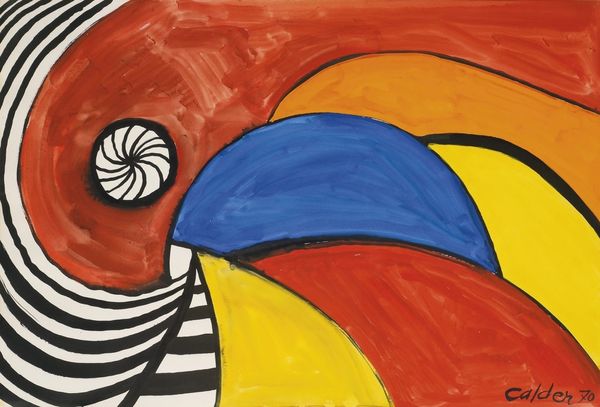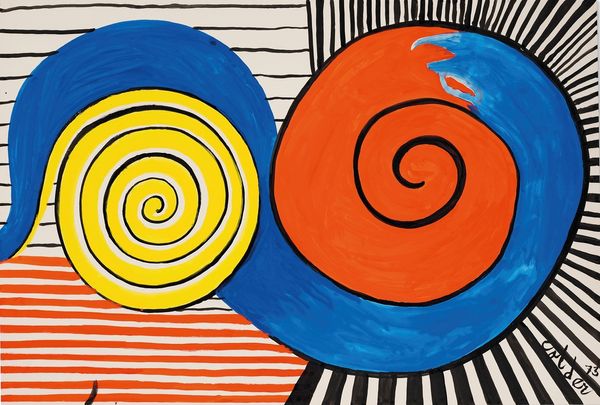
painting, acrylic-paint
#
pop art-esque
#
abstract-expressionism
#
kinetic-art
#
non-objective-art
#
painting
#
caricature
#
pop art
#
acrylic-paint
#
abstract
#
form
#
geometric
#
abstraction
#
line
#
modernism
Copyright: Modern Artists: Artvee
Curator: Isn't this piece delicious? Alexander Calder's "Nautilus and Loops" from 1968 just hums with energy, doesn't it? Acrylic on what looks like paper, a playground of pure, vibrant forms. Editor: It certainly grabs you. I'm immediately struck by its playfulness. It feels very graphic, almost like a poster, but with that unmistakable Calder wiggle. There’s something a bit mischievous about it. Curator: Mischievous is perfect. I think Calder, by this time, was so established that he felt totally liberated to just play. Looking at its reception then, critics either praised his constant innovation or grumbled about the supposed simplicity—you know, the old "my kid could do that" argument. Editor: Exactly. And I wonder if that “simplicity” isn’t precisely the point. Calder was working against the hyper-serious art world, challenging expectations of what "high art" should be. This embrace of basic shapes and bold colors… it feels democratic, accessible. Like art for the people, not just for critics and collectors. Curator: Absolutely! It is like he distilled joy into a visual language. And those loops and spirals! To me, it is more than playful: the work seems to resonate with natural forms: growth, movement, energy. There is a vibrant inner life to even these simple geometries. Editor: I agree. The nautilus, for example, hints at underlying mathematical principles – the golden ratio and so on. Calder, for all his playful spontaneity, was a trained engineer. These structures give the painting a kind of architectural integrity, it keeps your eye moving. Curator: It’s also interesting how, although abstract, it doesn't feel cold or clinical. I suppose this piece represents the sense of hope people felt about space exploration at the time, it seems very ‘of that moment’ – full of colour and wonder! Editor: Right, reflecting that cultural optimism. The fact that Calder's art still feels so contemporary points to his genius, he was very switched-on and receptive of new ideas and perspectives that were very much on the move at that time, which he cleverly weaves into the picture, with a seemingly childlike wonder. Curator: A perfect expression of his ethos. Thank you, that’s something that really shines when thinking about the social context surrounding this artwork and Calder at the time. It really emphasizes the lasting cultural presence of "Nautilus and Loops." Editor: Indeed, and how fortunate we are to engage with its delightful, dancing shapes and what they represent to each of us.
Comments
No comments
Be the first to comment and join the conversation on the ultimate creative platform.
